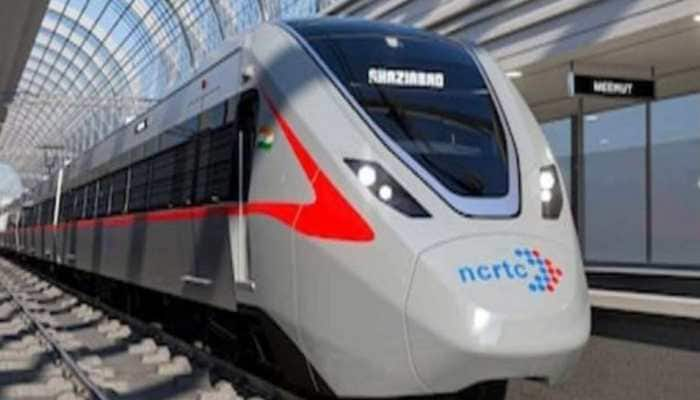West Bengal: In Eye Of Storm Over Dearness Allowance (DA) Arrears, Mamata Banerjee Government Pays Rs 20 Crore More To Ministers, MLAs
A debate has erupted following a comment by the municipal affairs and urban development minister and mayor of Kolkata Municipal Corporation Firhad Hakim that the state government believes in paying to the poor and financially marginalized sections of the society rather than giving more to those who are already being paid enough.
Trending Photos
) Chief minister Mamata Banerjee, however, stays at her own residence at Kalighat in South Kolkata and had not accepted any government accommodation.
Chief minister Mamata Banerjee, however, stays at her own residence at Kalighat in South Kolkata and had not accepted any government accommodation. KOLKATA: At a time when discontent is brewing in West Bengal over the pending dearness allowance arrears to the state government employees with the latter having already observed a days strike and two days of pen-down strike, a sharp rise in the expenditure on account of salaries, allowances and other entitlements of ministers and legislators has come into focus.
A debate on this issue has erupted following a comment by the municipal affairs and urban development minister and mayor of Kolkata Municipal Corporation (KMC) Firhad Hakim that the state government believes in paying to the poor and financially marginalized sections of the society rather than giving more to those who are already being paid enough.
After this comment by Hakim, questions are being raised that when the state government does not believe in paying more to those already being paid enough, then what was the justification for increasing the entitlements of ministers and legislators several times since during the last 12 years.
Finance department sources said that by the end of the current financial year of 2022-23, the expenditure on account of salaries, allowances and other entitlements of ministers and legislators is slated to be around Rs 52 crore, up from around Rs 33 crore in 2021-22.
As per the records of the finance department, during 2010-11, which is the last year of the 34-year Left Front regime in West Bengal, the total expenditure from the state exchequer was little over Rs 4 crore. At the same time, the monthly salaries of the ministers also increased manifold during the last 12 years. This is in addition to their entitlement for daily wages like all other MLAs.
Till 2011, the daily allowance for all legislators was fixed at Rs 750 and the amount was the same for ordinary legislators and those holding ministerial portfolios. However, currently an ordinary legislator is entitled to a daily allowance of Rs 2,000 and the amount is Rs 3,000 for those holding ministerial portfolios.
Till 2011, the chief minister was entitled to a monthly salary of Rs 8,500, which is now Rs 1,17,000 in addition to a further entitlement of Rs 1,81,800 per month which includes allowances. Chief minister Mamata Banerjee, however, stays at her own residence at Kalighat in South Kolkata and had not accepted any government accommodation. Her predecessor and the chief minister of the Left Front regime, Buddadehb Bhattacharjee also used to stay in a two-room apartment at Palm Avenue in South Calcutta, where he is still residing with his spouse Meera Bhattacharya.
Again as per records of the finance department, till 2011 the ministers drew a monthly salary of Rs 7,500, which is now around Rs 22,000. As per records, a minister currently draws a monthly amount of Rs 1,22,000 which includes his salary as a minister, daily allowances as MLAs and other statutory entitlements.
An ordinary legislator currently draws a monthly amount of Rs 82,000. Teacher of economics, P.K. Mukhopadhyay feels that there is no difficulty in increasing the salaries, allowances and other entitlements of the ministers and legislators.
"During the previous regime it was abysmally low and even now it is quite low if compared to other major states of the country. Probably such questions would not have been raised had there been at least some parity between the dearness allowance received by the state government with that of their counterparts in the Union government. It is not that the increase in the salaries and entitlements of ministers and legislators had been implemented in the recent past. Significant time has passed since the hike was implemented. But these questions were never raised before. There are surely reasons why these questions are raised now," he said.
The current gap in the dearness allowance of the state government employees and that of their counterparts in the Union government is to the tune of 32 per cent. The joint forum of state government employees has already observed a one-day strike on Friday preceded by a two-day pen-down strike in February.
Political observer Sabyasachi Bandopadhyay feels it is not just the huge dearness allowance gap that has prompted the questions to be raised on the salaries and allowances of ministers and elected representatives. "In my opinion certain insensitive comments by a section of the ruling party leaders about the agitators on the issue has fuelled this question at this point of time. Such comments and statements were really unwarranted," he added.
Stay informed on all the latest news, real-time breaking news updates, and follow all the important headlines in india news and world News on Zee News.
Live Tv







)
)
)
)
)
)
)
)
)
)
